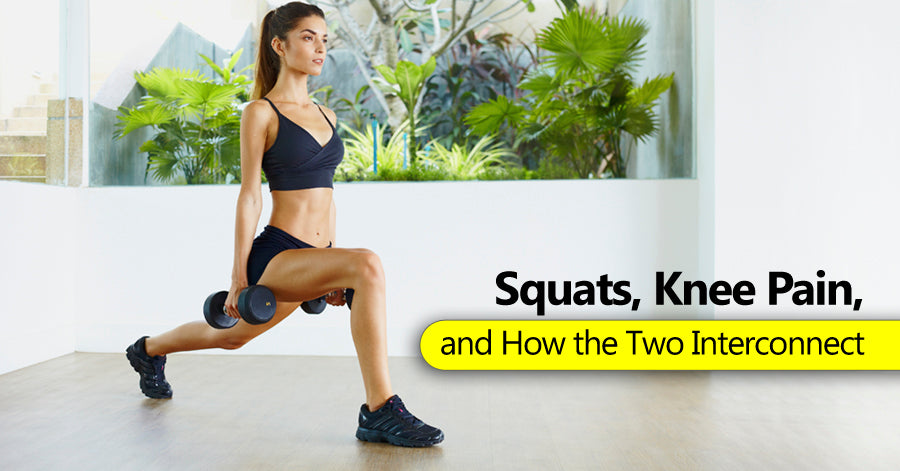Squats, Knee Pain, and How the Two Interconnect

Squats are a popular exercise when it comes to getting in shape and strengthening glutes, but they can come with a common complaint - knee pain. Frequently, fitness fans trying to get into shape comment that squats place too much pressure on their knees. While it's true that squatting is always going to require some forward movement of the knee joints, it's important to remember that it shouldn't actually be causing you any real discomfort. In fact, squats knee pain isn't actually a result of the exercise at all - it's an indication that you're doing something wrong.
In simple terms, if you want to know about squats, knee pain, and how the two interconnect - the answer is simple - they shouldn't. There's a right way and a wrong way to do squats, and we're going to teach you the way that doesn't stress your knees.
Squats, Knee pain, and the Truth
First things first, the archaic idea that your knees should never go past your toes when you're squatting is no longer relevant - so erase it from your mind. However, it is possible for you to let your knees move forward too far - usually causing your heels to raise up off the ground. When this happens, you are placing unnecessary stress on your knees by making them handle extra weight.
If this is a problem that you're dealing with quite often, it may be helpful to switch to box squats. Not only are they great for developing a good squat rhythm, but they help to keep your shins vertical and your heels on the floor. At the same time, you might benefit from investing in some knee compression sleeves or compression bandages. These help to support your joints during workouts so you're less likely to pull a muscle or end up with an injury.
Box Squats - Knee Pain Be gone!
Knee pain as a result of squats is a sign that you're making your knees take on too much work. Learning how to utilize the hips can take some of the extra strain away from your joints, and this is where box squats come in. They help to keep you honest regarding your squat depth, and reduce some of the pressure you're putting on your knees. Here's how you do them right:
- First, find a box that's around fifteen inches high. Remember that you can change the height of the box according to your body type, but your thighs should be just under your knees when you reach the lowest position of your squat.
- Test out the motion without weights, then place the box in a squat rack, and choose a weight that you can handle - without overdoing it.
- Move your feet about a hip-width apart (slightly more if needed), and rotate your toes out between fifteen and thirty degrees.
- Start the squat by breaking with your hips, sitting back while pushing your knees outwards, feet flat on the floor. Try not to extend your knees to the point where all of the weight is balanced at the front of your feet, just keep your knees in line with your middle toes.
- Lower your body slightly until your backside gently touches the box then slowly rise upwards into a standing position, squeezing your glutes as tightly as possible.
If you want to make sure you're doing box squats right, the best thing you can do is practice. Try to stick to a routine of squatting twice a week for a period of between six and eight weeks. To reduce potential joint pain, start off slowly with nothing more than body-weight squats. Once you get used to those motions, you can begin adding a light weight to your workout, and potentially lower the amount of reps you do.
Eventually, you'll be able to manage heavier weights, and be working through squats without that unnecessary knee pain.
For More Information on the ActiveGear Knee Support Click Here!


Leave a comment